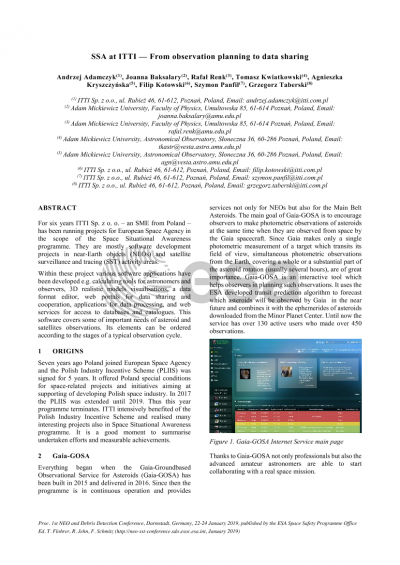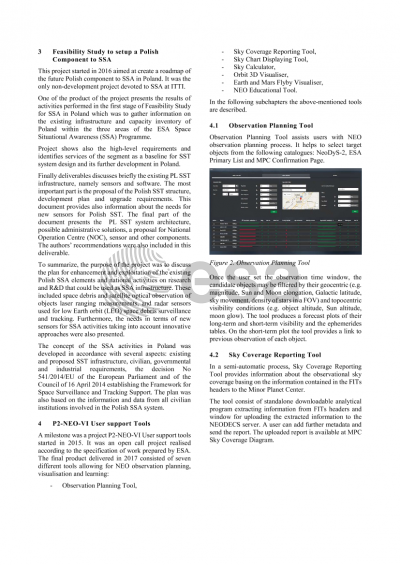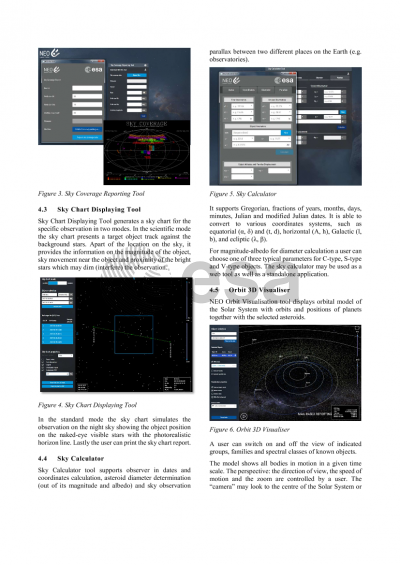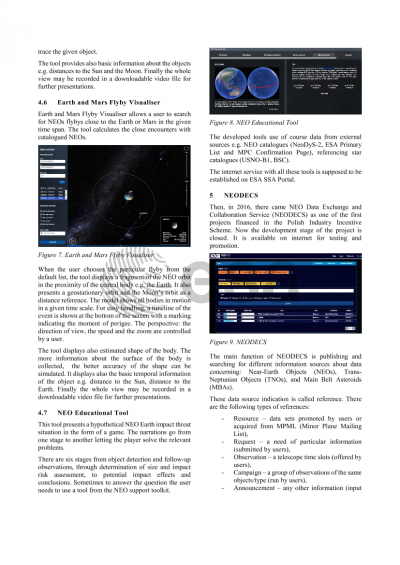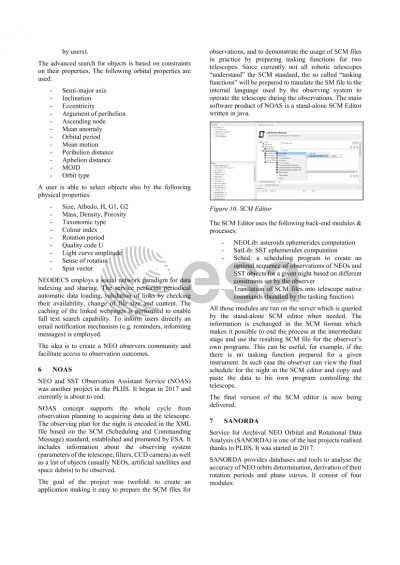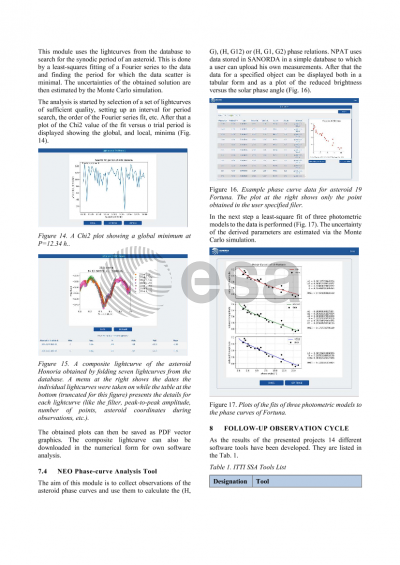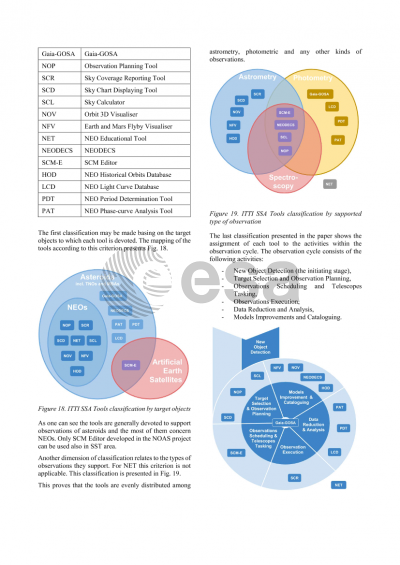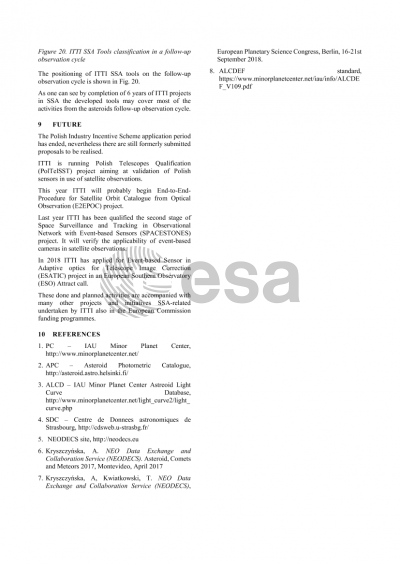Document details
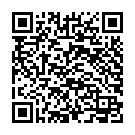
Abstract
For six years ITTI Sp. z o. o. – an SME from Poland – runs projects for European Space Agency in the area of Space Situational Awareness. They are mostly software development projects. Everything began when the first internet service Gaia-Groundbased Observational Service for Asteroids (Gaia-GOSA). A milestone was a project P2-NEO-VI User support tools started in 2014. The final product consists of seven different tools allowing for NEO observation planning, visualisation and learning. Then three other projects came, namely: NEO Data Exchange and Collaboration Service (NEODECS), NEO and SST Observation Assistant Service (NOAS), and Service for Archival NEO Orbital and Rotational Data Analysis (SANORDA). All these project are now at the final stage and they will provide other software tools. NEODECS will help to share the data and resulting information gathered through the observations. Its role is to create a NEO observers community and facilitate access to observation outcomes. NOAS supports the whole cycle from observation planning to telescope tasking basing on the SCM (Scheduling and Commanding Message) standard established and promoted by ESA. SANORDA is going to provide NEO historical orbits giving an opportunity to observe how the orbit model uncertainty decreased after number of astrometry observations. Additionally SANRODA products concern NEO photometric data like: determined period of rotation, light curves, and phase curves. All this software covers the most important needs during asteroid observations. Some of them may also support satellite surveillance and tracking.
Obviously, the tools exploit data from external sources e.g. NEO catalogues (NeoDyS-2, ESA Primary List and MPC Confirmation Page), referencing star catalogues (USNO-B1, BSC), satellites orbit elements (TLE), etc. This software was incorporated astronomical calculation libraries. Consolidated as an integrated Internet service it could provide a lot of help in both scientific and industrial researches. Finally certain components could be used by the software at NEO and SST Operation Centres. The paper will focus on the software architecture of the mentioned products and will discuss future capabilities they bring.
Preview
